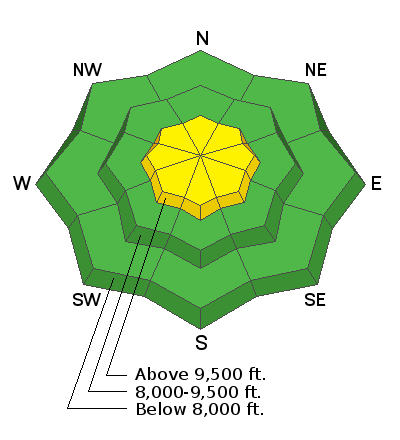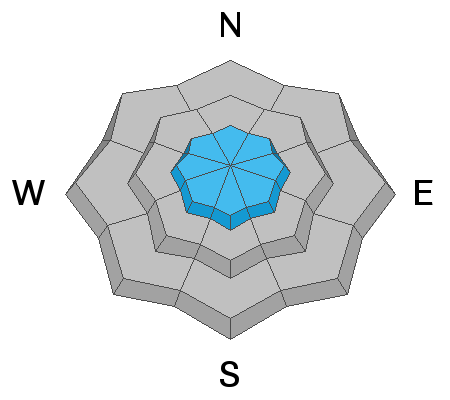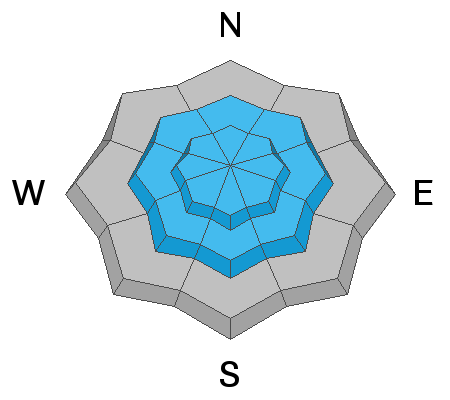It is a nice change of pace to finally be able to report some snow totals. Since Tuesday evening, 5-9.5 inches of new snow (0.20-0.41 H2O) has fallen, favoring Little Cottonwood Canyon.
This morning: Under mostly cloudy skies, snowfall has stopped and temperatures are in the low teens F at trailheads and in the single digits at ridgelines. Winds from the northwest are averaging 5-15 mph gusting to the mid-20s at mid-elevations, at upper elevation ridgelines wind speeds are averaging 20-25 mph with gusts near 50 mph.
Today: Skies will remain mostly cloudy, and the Northwest winds will continue to increase throughout the day into the afternoon reaching gusts up to 55 mph by the evening. Expect mountain temperatures to climb into the teens and low 20s F. The northwest winds will average 5-15 mph, with gusts up to 25 at mid-elevations. At upper elevation ridgelines, the winds will average 20-30 mph and gust up to 45 mph this afternoon, and increasing this evening.
Looking ahead: The rest of the week and weekend will have dry and cool weather. Another storm should arrive late Sunday night or early Monday morning. This one looks more promising.
Yesterday's storm capped a wide variety of snow surfaces which will determine future avalanche conditions as more new snow accumulates. There is an incredible amount of variability in the old snow surface which consists of weak facets, crusts of varying thicknesses and hardnesses, wind-eroded and sculped snow, and some areas are simply covered in tracks.
Tuesday Drew was on Reynolds peak and provided a good summary of snow surface conditions in his observation
HERE.
The challenge in the future is that having such a wide variety of snow surfaces means there will be a wide variety of stability from slope to slope and the pattern will be complex and tricky to map. With more cold temperatures in the forecast, the new snowfall from yesterday may begin to weaken and facet at the surface, continuing to add to the wide variety covering the range. Pay attention to the changing snow surfaces before the next storm system.
Yesterday, ski resorts and backcountry travelers reported easy sluffing and loose dry avalanches within the new snow, and small soft slab avalanches up high in the wind zone.










